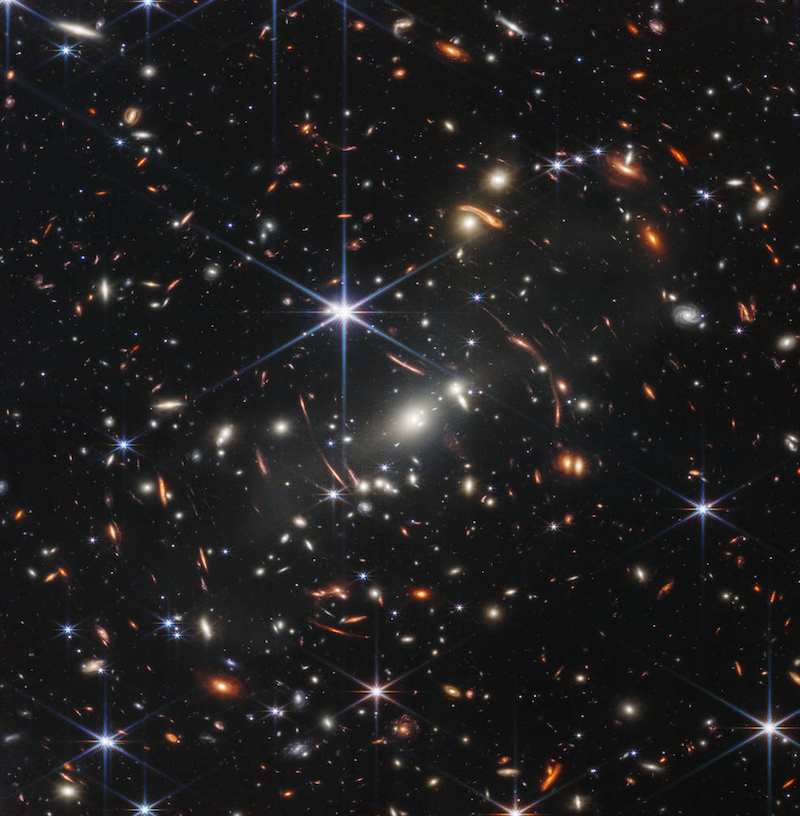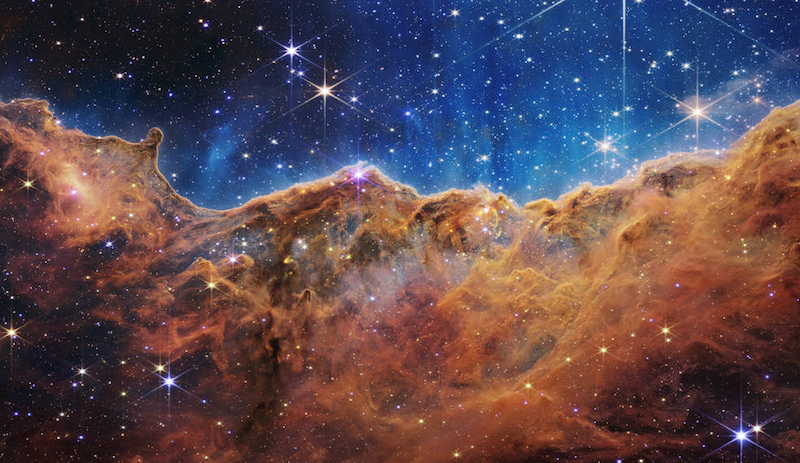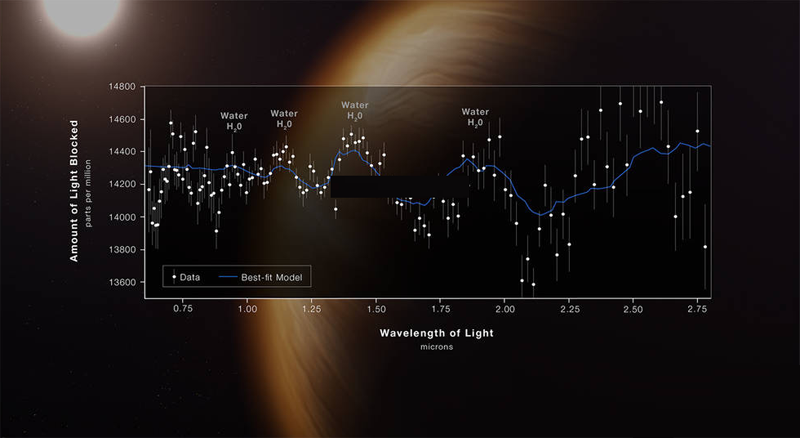Iconic Cosmic Images from the James Webb Space Telescope
Today, NASA released the first images taken by the James Webb space telescope (JWST), the largest telescope ever launched into space. Included in the haul is the deepest infrared view of the Universe to date, containing light that has taken 13 billions years to reach us. To mark the occasion, Physics Magazine editors have chosen their favorite images from the release.
Webb Dives Deeply into Time
The first image from JWST had its debut at the White House with President Joe Biden, who hailed the data release as “a historic moment for science and technology, for astronomy and space exploration, for America and all humanity.” The opening snapshot gave the farthest view of the Universe in infrared light, revealing a panoply of galaxies at the dawn of time.
The target of Webb’s first image was a galaxy cluster in the Southern Sky called SMACS 0723, which is about 5 billion light years away from Earth. The picture captures a patch of sky teeming with galaxies. “There are galaxies everywhere we look,” said Jane Rigby, Webb’s Project Scientist for Operations, who spoke on NASA TV during the image release this morning.
Because of its immense size, the cluster is magnifying and distorting background galaxies, through an effect called gravitational lensing. Some of these lensed galaxies are being seen at a time more than 13 billion years ago. Webb scientists have extracted the spectra of one of the earliest galaxies, showing traces of hydrogen, oxygen, and neon atoms. These data confirm that very early stars were creating some of the elements that make up life on our planet.
A similar image, called the Hubble Deep Field, was taken in 1995 by the Hubble Space Telescope. Compared to its predecessor, the Webb Deep Field shows more detail and only took a fraction of the time to develop. “We took it before breakfast,” Rigby said.
—Michael Schirber
The Beauty in Webb
From a dying star spewing gas to a quintet of dancing galaxies, every Webb image released today contained previously unseen objects and untold beauty. But it was the last image that took my breath away. Showing a star “nursery” known as the Carina Nebula, the image resembles a glittering landscape of towering mountains with precipitous cliffs under an uncannily clear night sky. Michelle Thaller, who is part of NASA’s communication team and who presented the reveal show, looked visibly moved when the image appeared.
The Carina Nebula sits within the Milky Way about 76,000 light years from Earth. The nebula is home to a seemingly endless supply of gas and dust from which new stars and planets are born. The same region was imaged by Hubble, but the increased resolution of Webb has allowed scientists to see the nursery in staggering detail.
“Today, for the first time, we’re seeing brand new stars that were previously completely hidden from our view,” said Amber Straughn, Webb’s Deputy Project Scientist. The image also shows bubbles, cavities, jets being ejected from these newly formed stars, and galaxies lurking in the background. And then there are structures that astronomers have yet to explain. “The data is so rich,” Straughn said.
—Katherine Wright
Peering into a Planet’s Atmosphere
Today’s JWST observations and discoveries didn’t all come with stunning visuals. This graph shows the spectrum of starlight transmitted through the atmosphere of WASP-96 b, a planet in our Galaxy that sits 1150 light years from Earth. Features in this spectrum indicate the presence of water vapor in the planet’s atmosphere.
WASP-96 b, a puffier and much hotter planet than any planet orbiting our Sun, completes one orbit around its star in three and a half Earth-days. The spectrum was derived by measuring how infrared light from the planet’s star was filtered by its atmosphere as it transited in front of the star. Bumps and wiggles in the transmitted light could be related to the presence of specific molecules in the atmosphere. The spectrum even allowed the researchers to infer the presence of haze and clouds.
“This spectrum is so exciting because it covers infrared wavelengths of light that we had not access to before,” said Knicole Colón, Deputy Project Scientist for exoplanet science with NASA’s Goddard Space Flight Center. There is a lot more to come from Webb, including more detailed observations of planets in our Solar System, she said.
—Matteo Rini






